Introduction
In a previous article, we discussed the innovation of Dynamic Liquidity Market Makers (DLMMs), their functionality, and key advantages. This article explores strategies that leverage this technology on Meteora’s platform.
Before we proceed, please ensure you have a basic understanding of DLMMs, as detailed in our earlier article here.
Main Page
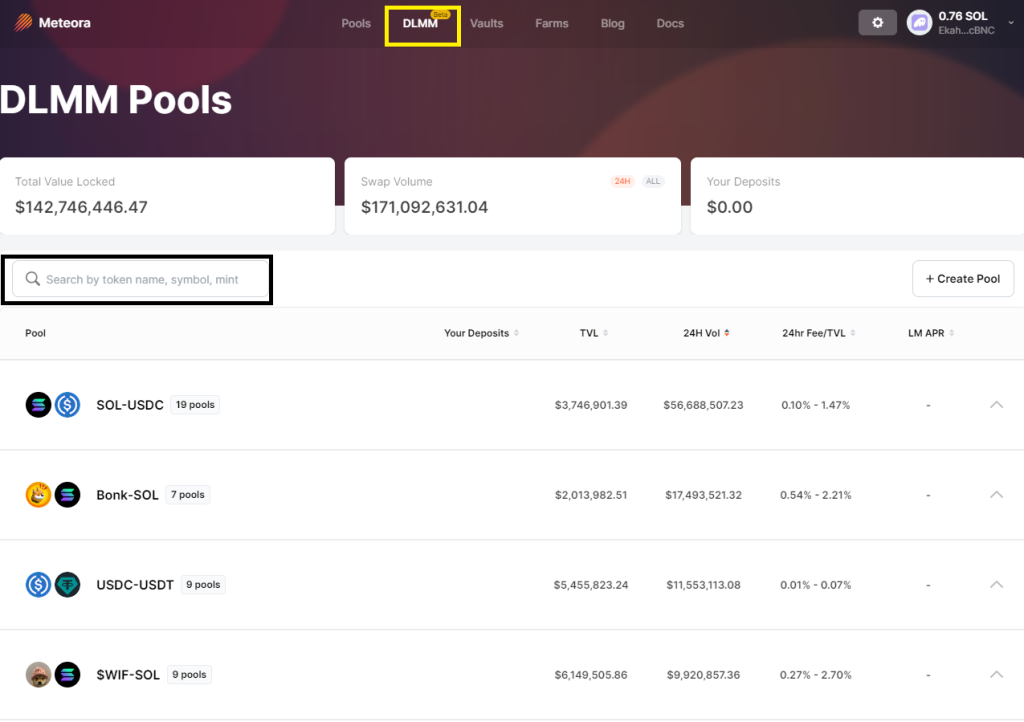
On the main page, you will find a list of available pools, typically sorted by the highest 24-hour volume unless you choose to reorder them. A search box, highlighted in black, enables you to filter pools based on your preferred asset.
Selecting a Pool
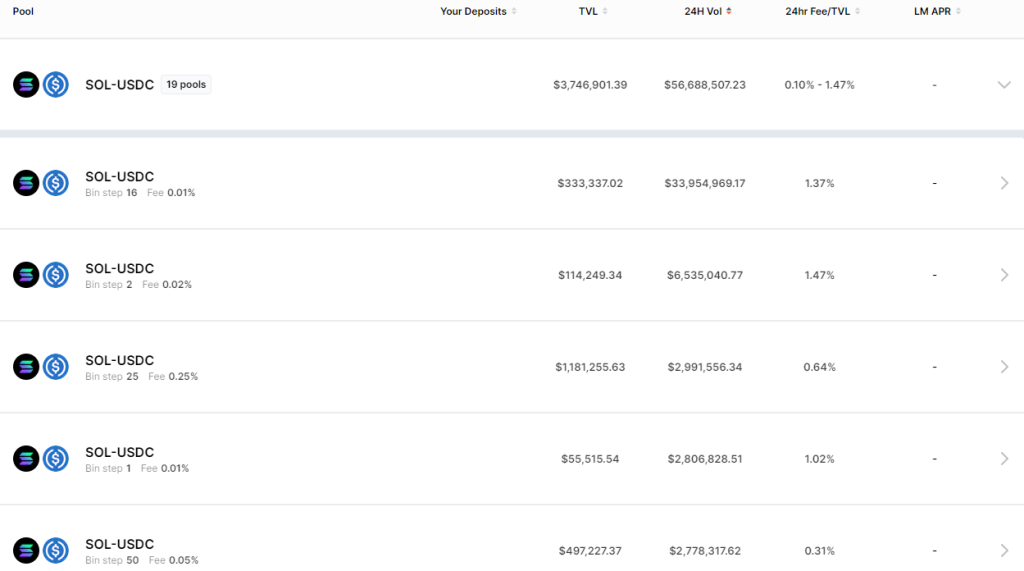
Select your desired pair to then view the available pools. Like Orca, this page will display the fee rate, TVL and volume generated by the pools which are then calculated to give the 24hr fee/TVL rate. However, it may not be as simple as selecting the pool with the highest percentage. You may also need to factor in the bin step.
The bin step refers to the width of each individual bin, or sub-range. Meteora permits up to 69 bins per pool. A smaller bin step therefore results in a narrower maximum range that the pool can cover. This becomes a limiting factor only if you intend to set a very wide range.
Setting Your Strategy
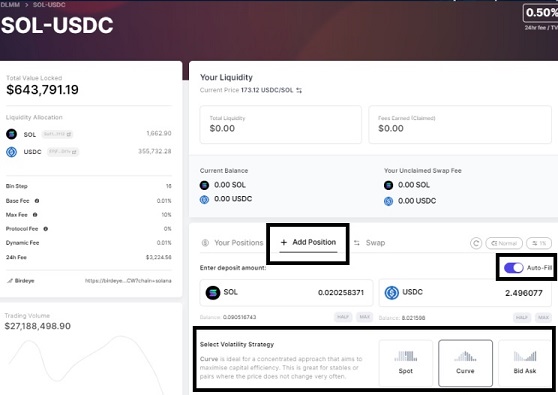
To add to the pool, click ‘Add Position’. Select your strategy in the box highlighted at the bottom of the screen. We will explain each option in detail shortly. Using the ‘Auto-Fill’ feature can also streamline the process. When you enter the amount you wish to deposit of one asset, Auto-Fill calculates the corresponding amount of the other asset, based on the required ratio. It is advisable to activate this feature after setting your strategy and range to ensure the deposit ratio is accurate.
Set Your Range
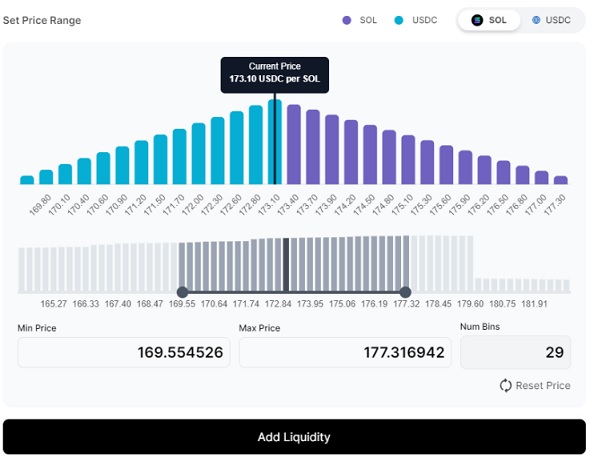
Your range can be set via the sliding toggles along the bottom which will dictate the number of bins you are utilising. Once all parameters have been set, proceed to ‘Add Liquidity’.
One feature that Meteora lacks is an auto-swap function to achieve the required deposit ratio. This process is completely manualised and requires users to carry out the swaps themselves.
Strategies
Spot
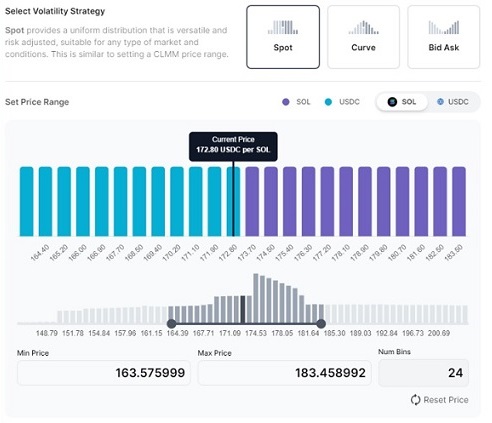
The first option is ‘Spot’ and is simply an even distribution of your liquidity across your range. There is really no difference here compared to a regular CLMM pool.
Curve
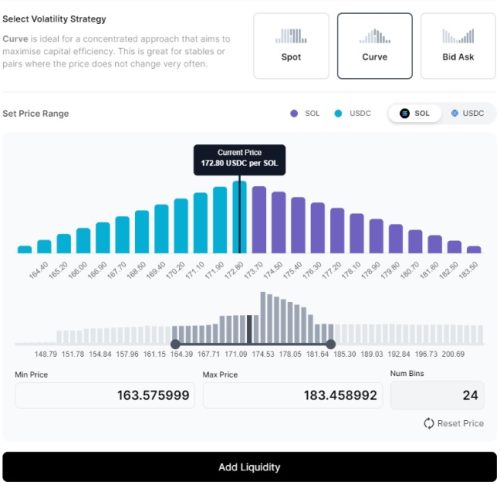
The second and most commonly used strategy is ‘Curve’. This strategy focuses your liquidity around the current price to maximise capital efficiency, making it particularly effective in ranging markets.
This strategy requires regular rebalancing as you ideally want the middle of the curve to be set where price currently is.
It also entails a higher risk of divergence loss. If the price rises sharply, you end up selling your holdings early, reducing your exposure to potential gains. Conversely, if the price falls, you buy more of a depreciating asset at a higher rate, increasing your exposure to losses.
Bid-Ask
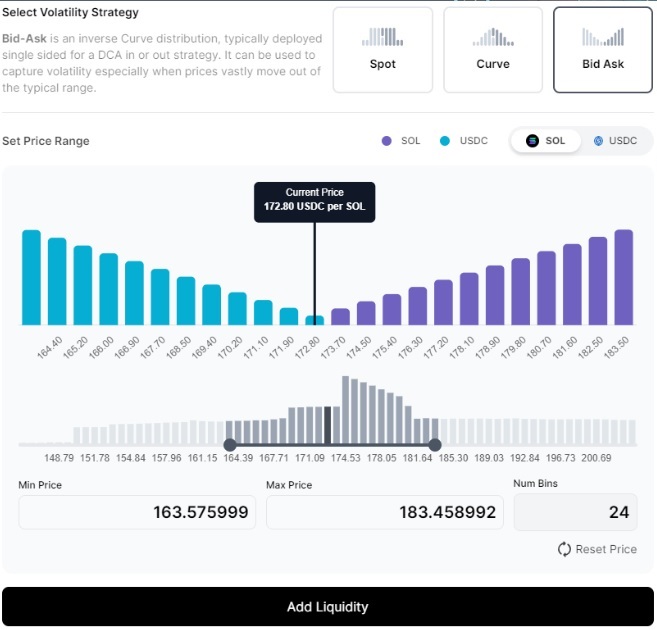
The third strategy, known as ‘Bid-Ask’, focuses your liquidity at the extremities of your range in anticipation of market volatility. This approach is the least capital efficient if the price remains stable and within a tight range. However, it incurs the least divergence loss, as the price needs to move significantly before it affects your liquidity positions.
The ‘Bid-Ask’ strategy can be particularly useful for dollar-cost averaging (DCA) into and out of a position. For instance, if you are providing liquidity on a token and the value drops to the lower end of your range, you may be comfortable accumulating more of it and withdrawing your position in anticipation of a price rebound.
Conversely, if the price reaches the upper end of your range, you might want to exit your position in an asset you are holding, capitalizing on the higher price. This strategy allows you to strategically enter and exit positions based on market movements.
Position Management
This is one area where Meteora is still lacking in comparison to other platforms with issues such as:
- No Centralized Dashboard: Meteora lacks a central dashboard where users can view and manage all their positions from one location. Instead, you must navigate back to each specific pool to manage your deposits.
- Reward Claims: Rewards must be claimed manually from each individual pool. There is no “claim all” function that allows for collective reward retrieval across multiple pools.
- Compounding Rewards: Rewards are not auto-compounded and cannot be seamlessly integrated into an existing position. To reinvest your rewards, you need to open a new position within the same pool.
Summary
Meteora’s innovative Dynamic Liquidity Market Makers (DLMMs) enable strategies not readily available with standard liquidity provisioning. However, further enhancements to their platform are required to significantly improve the user experience.


